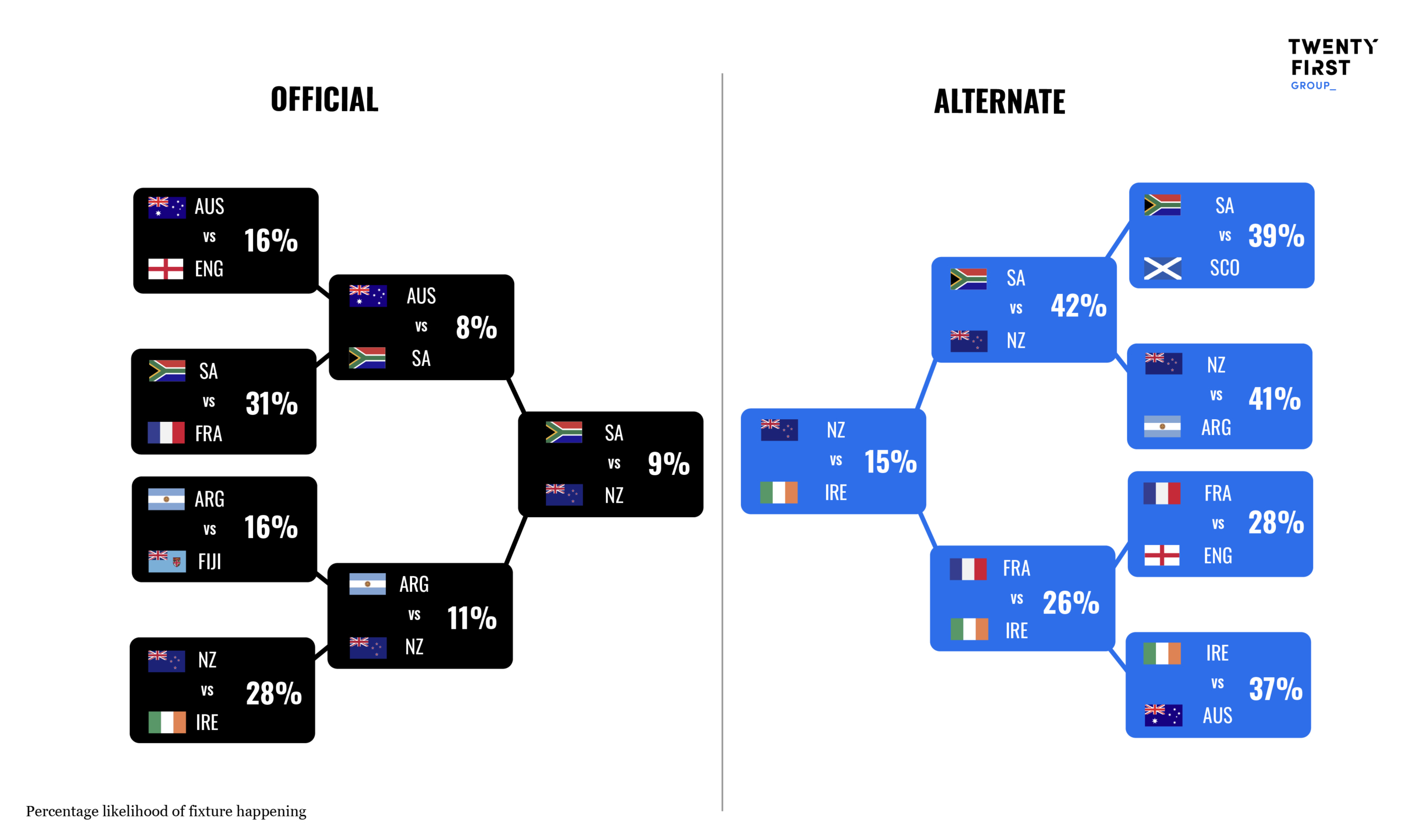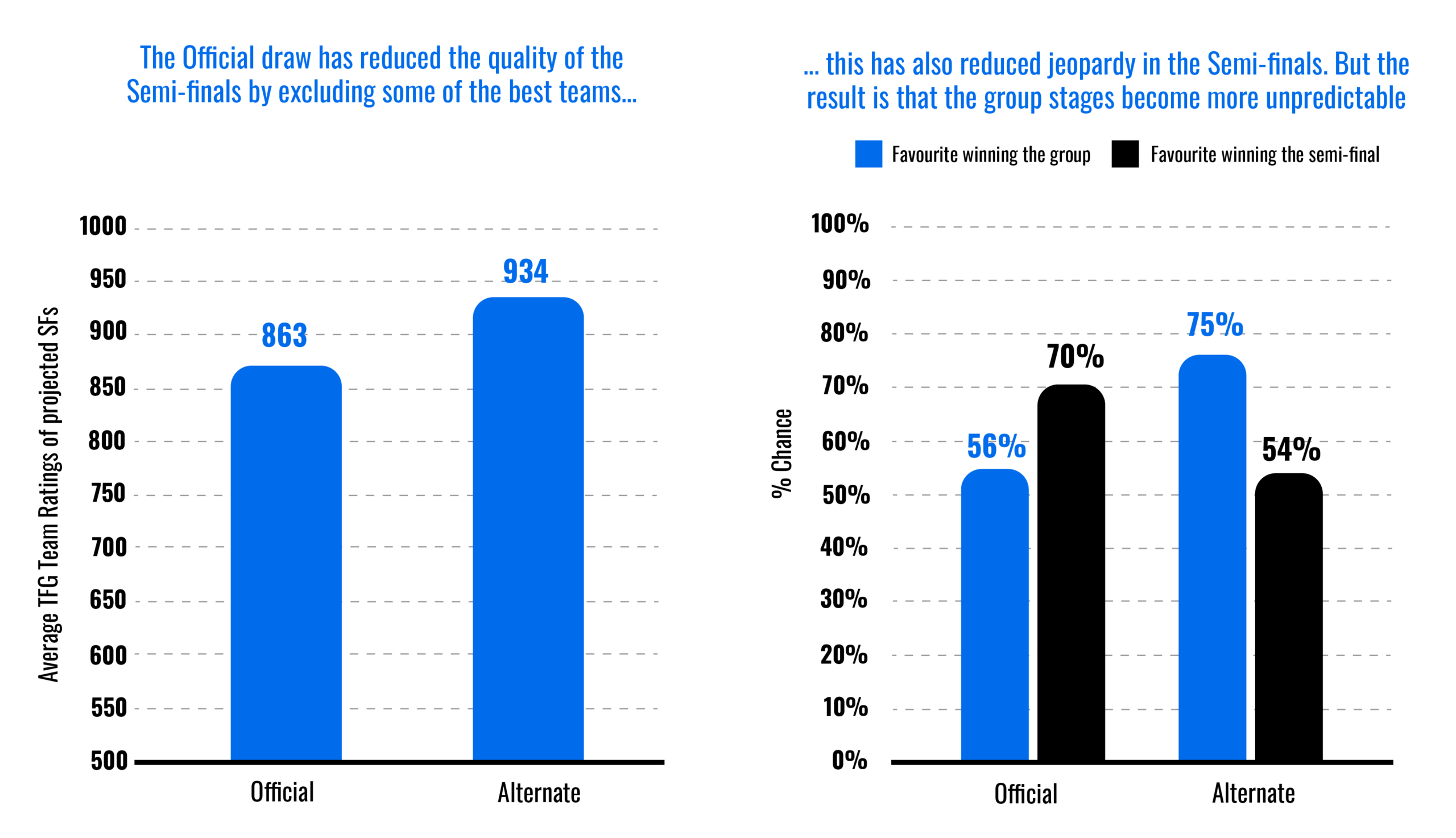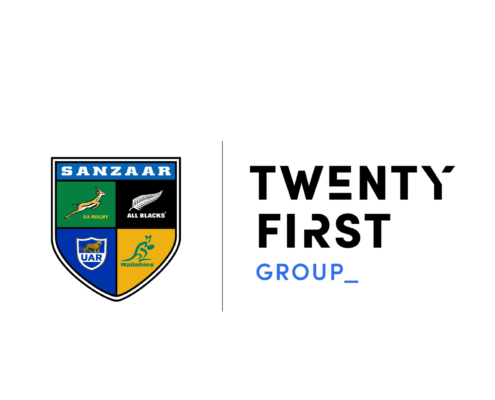Thought Leadership
Rugby World Cup 2023 – The Luck of the Draw
12 MIN READ
Thought Leadership
Inspired by what you’re reading? Why not subscribe for regular insights delivered straight to your inbox.
World Rugby’s decision to make the World Cup draw almost 1000 days before the tournament is likely to prove to be a mistake. A failure to account for more recent performances of the 20 teams risks undermining the attractiveness of the tournament for fans, as well as undermining sporting integrity.
Four years ago, England produced one of their greatest Rugby World Cup performances, rampaging past New Zealand to reach the final. England’s team were the youngest ever to start the final: English rugby seemed to be in a strong place.
In the other semi-final, Wales narrowly lost to South Africa. Afterwards, Wales Coach Warren Gatland, with a shade of envy, suggested that England had played their “final” early. He was right – England’s performance drop in the final was stark, with South Africa bullying England upfront and scoring freely. Gatland had correctly predicted the decline, but what he couldn’t have foreseen was that it would continue for the next 4 years.
Poor results over the 2021 and 2022 Six Nations, an uninspiring 2023 Six Nations and flat performances in the World Cup warm up games have left the most optimistic of England fans searching for hope.
That hope has come in the form of the draw, resulting in England having a clear route to the semi finals.
But just how important is the draw and are England the only beneficiaries?
The Draw
The 2023 Rugby World Cup draw on 14th December 2020 grouped teams into 5 bands based on performance levels. Since then teams have improved and declined, meaning the resulting groups have an uneven spread of the current best teams across groups, with the 5 strongest current teams placed in Group A and Group B.
Our modelling shows that the draw has given England a 41% chance of making the semi-finals, slightly higher than hosts France (40%) despite being a considerably weaker team. Scotland, meanwhile, are stronger than all of the teams in Group C and Group D, but remain the 3rd strongest in Group B.
International teams are in constant flux; since the World Cup draw in 2020, there has been a seismic shift in the pecking order of international rugby. France are resurgent, Scotland have started to realise their potential and Ireland have become the number 1 team in the world, while England and Wales have been in a state of steady decline.
Event planning issues aside, delaying the draw maximises the quality of matches in the semi-final and final. If the draw were to happen 6 months before the tournament, the pool groups would be vastly different. Seeding the teams ranked by TFG’s team rating model from March 2023, the groups would instead look something like this:
Group Stages
These alternative groups would result in vastly different odds for the better teams progressing. Ireland and South Africa both benefit from no longer being in the same group. Scotland would gain the most since their improved rating would place them in the second seeding pot rather than the third, meaning they would be the second strongest team in their pool, a critical difference given two teams progress per group.
Japan would struggle more as they would drop from being the potential banana skin to weakened England and Argentina sides, to being the 4th strongest team in their group. England and Argentina would also take a hit: England become the second strongest team in their pool and Argentina face a tougher first seed and more competitive third seed in their group
Knockouts
This alternative draw would set up a much more attractive set of knockout matches. In particular, the quality of Semi Finals is dramatically reduced under the current draw. An all southern hemisphere semi finals is currently the most likely outcome, with the favourites in both ties having over 70% chance of winning. Compare this to the alternate draw, where South Africa vs New Zealand and France vs Ireland are the most likely semi finals, the favourite has at most 54% chance of progressing.
The Impact on the competition narrative
The early draw for the World Cup has changed the competition narrative, allocating jeopardy in the group stages through two ‘groups of death’, but at the expense of jeopardy in the latter stages, where lower quality games with greater mismatches are more likely to take place.
Indeed, this has echoes of women’s tennis, where the three-set format means more early-round upsets at the expense of latter round heavyweight contests. In our view, this has undermined the ability of women’s tennis to generate the same commercial returns as the men’s game.
The draw also undermines sporting credibility, unfairly hurting Scotland and Ireland’s chances in particular – two teams that have yet to enjoy significant World Cup success.
We therefore also believe that the existing draw undermines the potential of the World Cup to grow rugby’s fan base; new and casual fans are naturally more attracted to the latter stages of the tournament, and organisers should do everything within their powers – without undermining sporting integrity – to ensure that the knockouts deliver best vs. best, unpredictable rugby. World Rugby’s decision to make a change ahead of the 2027 tournament means that the tournament in Australia has a better chance of thrilling fans at the key moments in the tournament.
If you would like to find out more about our Competition Intelligence services please get in touch with Ben Marlow
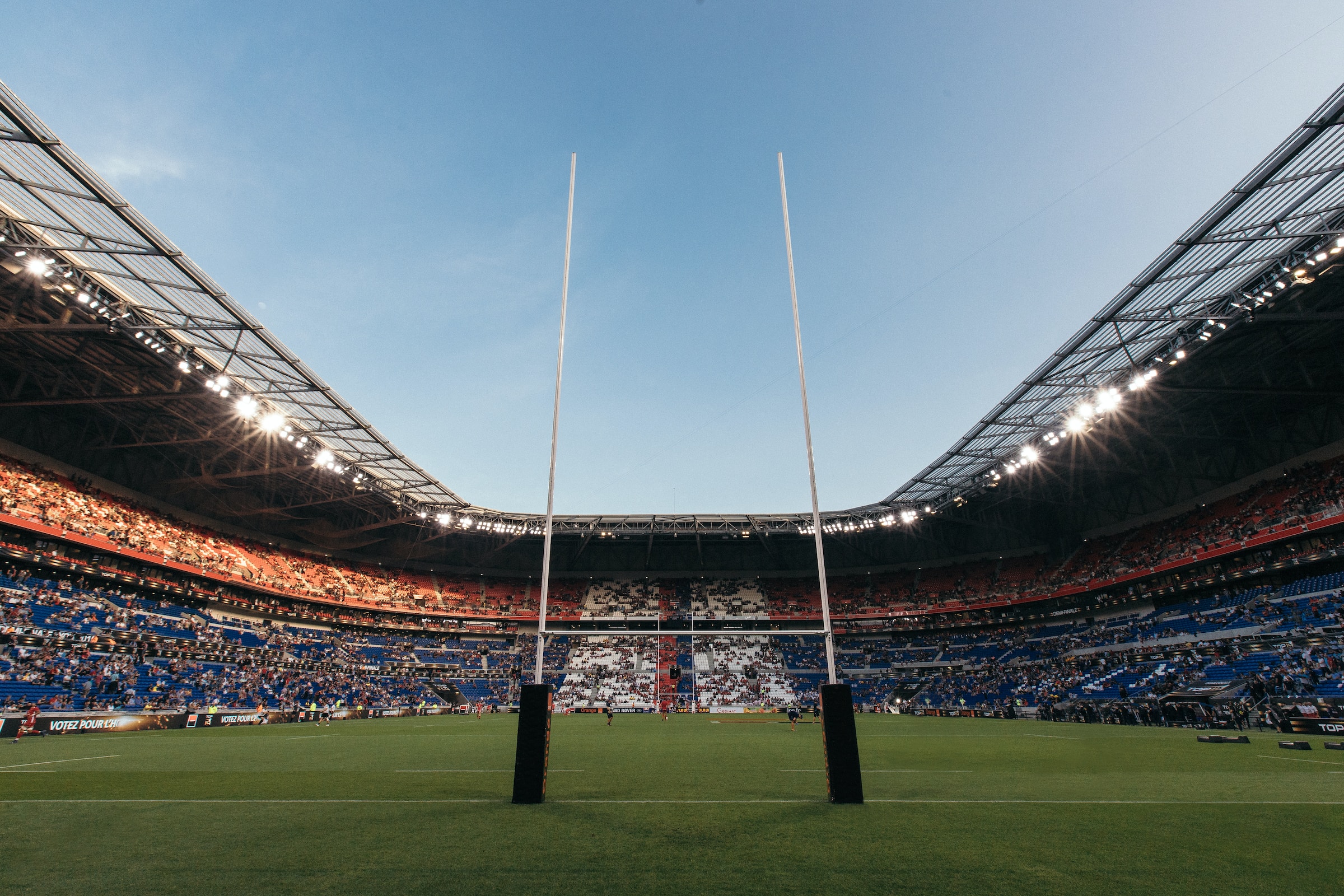
![[Rugby World Cup 2023 Groups & TFG Current Team Ratings]](https://www.twentyfirstgroup.com/wp-content/uploads/2023/09/graphic-1-scaled.jpg)
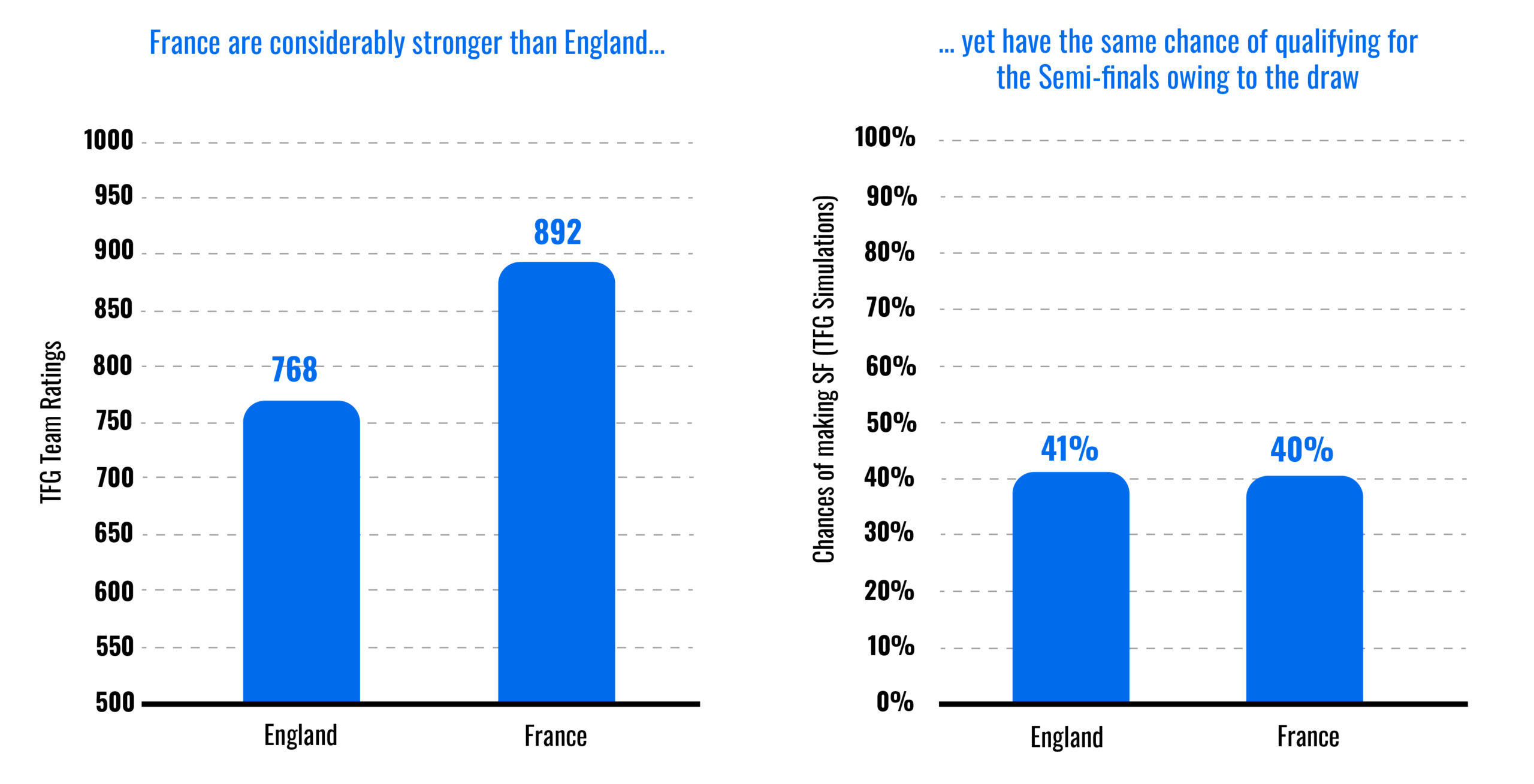
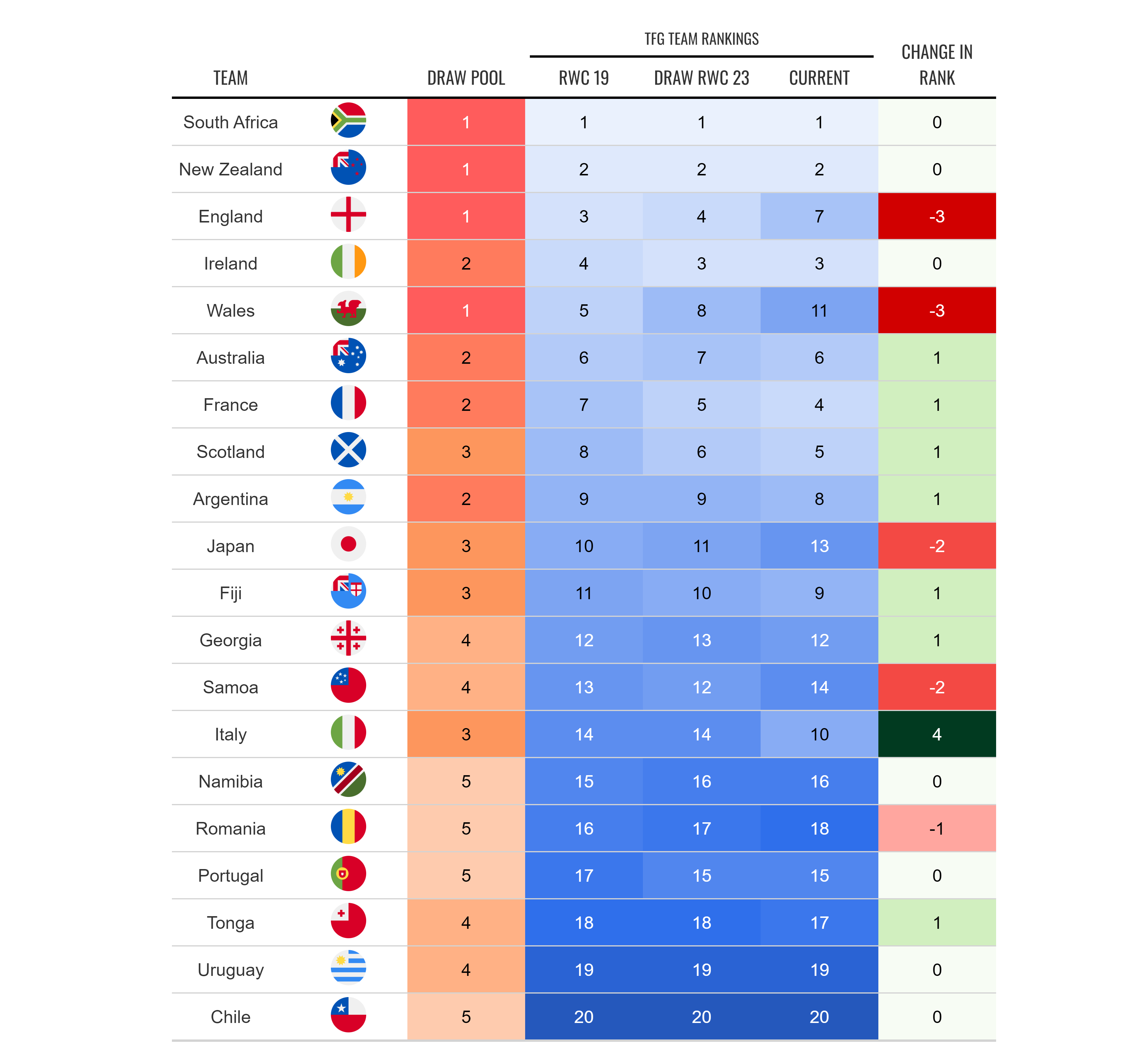

![[TFG Rugby World Cup 2023 Predictions for Group Stage]](https://www.twentyfirstgroup.com/wp-content/uploads/2023/09/Graphic-5-scaled.jpg)
